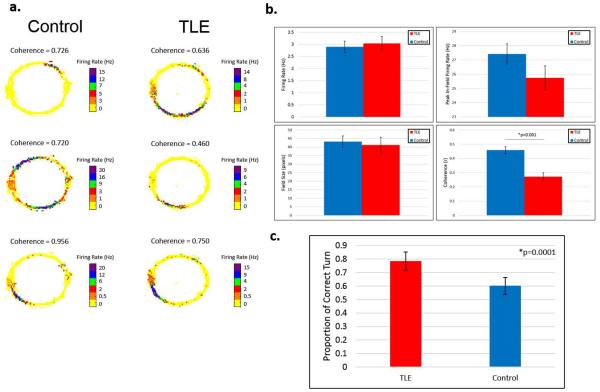Figure 3.
TLE rats have disrupted place cells. Rats were trained to run in clockwise or counter-clockwise direction in a circular track for food reward on one end (9 o'clock on rate maps). (a) Rate maps are obtained by overlaying unit firing rates recorded from tetrodes in the CA1 layer of the hippocampus with position data recorded from LEDs placed on the animals' headstages. The heat maps show examples of rate maps of place cells recorded from different TLE rats and control rats. (b) Place cells from TLE and Control rats had similar firing rates as well as peak in-field firing rates during the RUN session. There were no differences in average field sizes. Coherence values are calculated by comparing the rate of firing of each pixel to its neighboring pixels (1 pixel = ~1 cm2) to quantify how smoothly each place cell increases its rate of firing towards the center of its place fields. TLE rats showed lower coherence than controls (GEE, p=0.004). (c) Position data was used to determine rats' behavior in the maze. Each complete turn was considered a correct turn. Only completed turns were included in the analysis. TLE rats showed a higher direction preference than controls (GEE, p=0.0001). Place cells recorded from TLE rats showed decreased coherence that parallel spatial learning and memory deficits discussed previously. TLE rats showed higher directional preference in the repetitive task, suggesting a higher persistence or a lack of behavioral flexibility.

